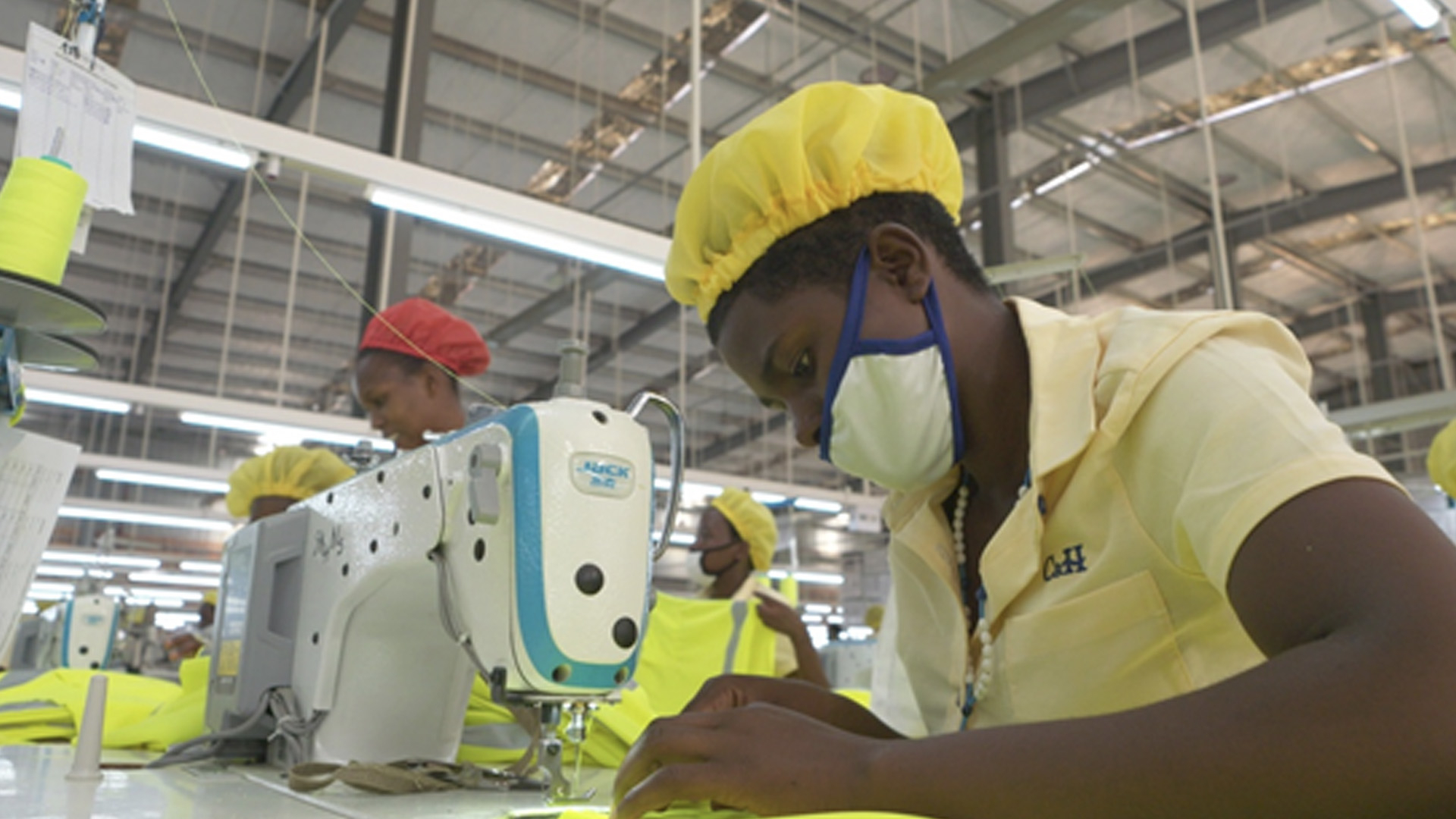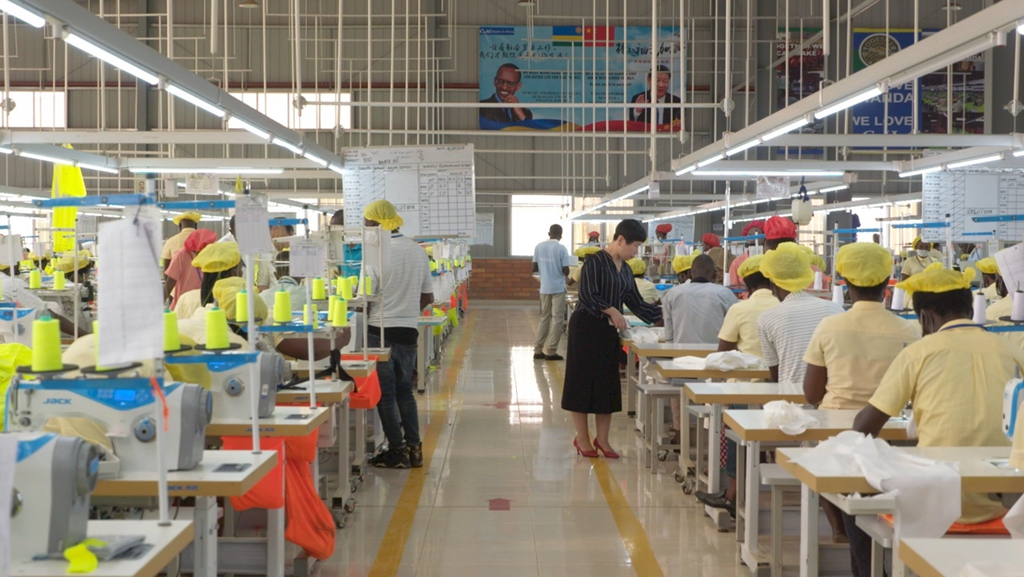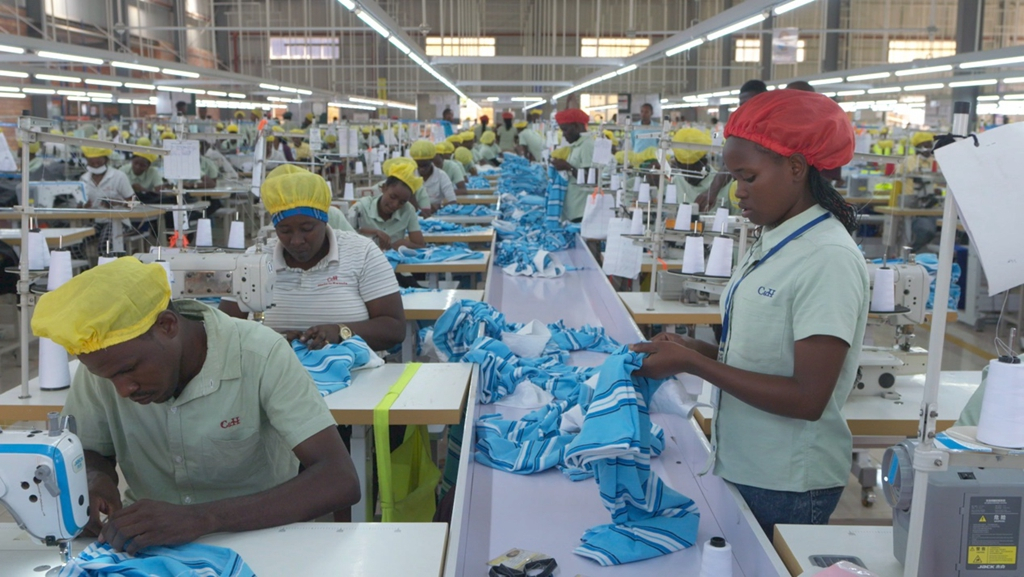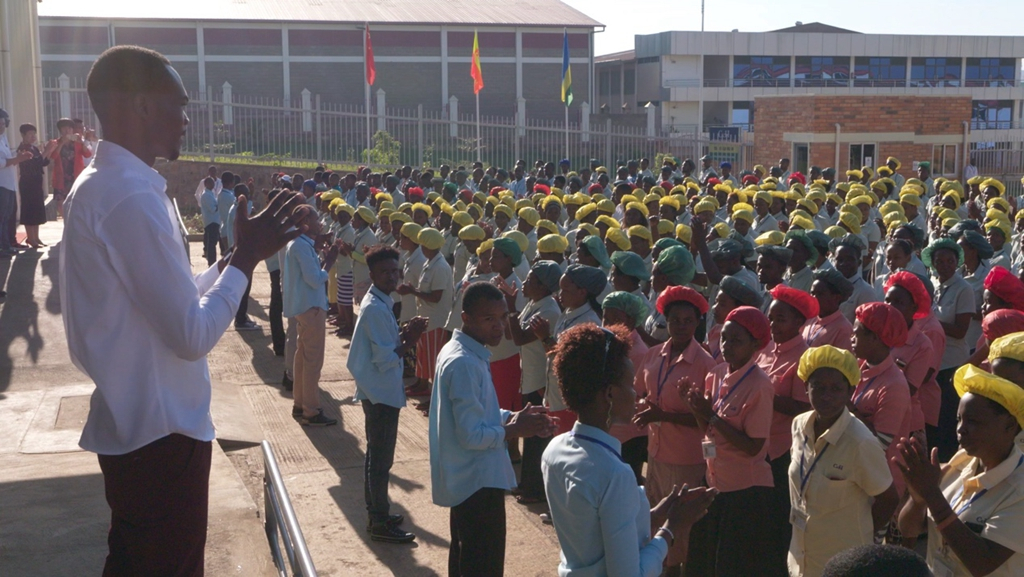
Tech & Sci
22:28, 22-Jul-2018
Chinese garment factory contributes to 'Made in Rwanda' campaign
Updated
22:14, 25-Jul-2018
By He Weiwei
02:36

Bonke Freddy Mubotanyi works at a garment factory in Kigali, the capital of Rwanda. After over two years of hard work, he’s now a supervisor of the factory’s embroidery department, consisting of 40 workers.
“I’m very proud of my work,” Freddy told CGTN. “We used to have teachers from China, they taught us traditional Chinese embroidery, and we combine it with the African culture so that we can create good things.”
The garment factory that Freddy works at is founded by a Chinese entrepreneur Ma Xiaomei, who has been living in Africa and running her garment business for 15 years.

Ma Xiaomei at her garment factory in Kigali. /CGTN Photo
Ma Xiaomei at her garment factory in Kigali. /CGTN Photo
“Rwanda hasn’t had any textile industry in the past, so establishing such a garment factory here was quite difficult,” Ma told CGTN. “Workers need a lot of training, which costs a lot. But the Rwandan government helped me cover 70 percent of the training costs, which made me determined to invest in the country four years ago.”
The reason why Rwandan government was so supportive, is the country’s strong determination to develop its own industries. And the garment sector is a great starting point.
Like many other Eastern African countries, Rwanda used to be a large importer of secondhand clothes from the US. To change the situation, the country increased tariffs on imported used clothed from March 2017. According to Reuters, the import duties on used clothing from America was raised from 0.25 to 2.50 US dollars per kilogram. And that hasn’t changed even as the US president announced in April to suspend duty-free treatment on US imports of apparel products from Rwanda under the African Growth and Opportunity Act (AGOA).

The Chinese garments factory now has 1,500 workers. /CGTN Photo
The Chinese garments factory now has 1,500 workers. /CGTN Photo
What Rwanda calls on, is a “Made in Rwanda” campaign. And Ma's garments factory thus became a model for the textile industry under the scheme. It now has 1,500 workers, all of whom are local. They mainly produce uniforms.
“We used to have most of our orders from the US, but now as the campaign goes on, selling clothes to the US is not that profitable. So we started to look for domestic markets,” Ma said.
“We now receive orders from local schools and government bodies for uniforms, many people in Rwanda are wearing clothes made from our factory. We also have a collaboration project with the government to offer trainings to smaller garment workshops and buy them modern machines to make clothes.”

Rwandan workers at the garments factory gather for morning meeting. /CGTN Photo
Rwandan workers at the garments factory gather for morning meeting. /CGTN Photo
In the eyes of local workers like Freddy, Ma is a good boss who gives them a career.
“Thanks to this job, I can support my family, and have better livers than before. Ma often gives us advice at work so that we can pursue our dreams. For my future plan. I want to be a businessman, I want to invest in garments making, I really like it.”
Ma also has her plan. Another building is now under construction to enlarge the factory, soon she’ll be able to provide 10,000 jobs to local workers.

SITEMAP
Copyright © 2018 CGTN. Beijing ICP prepared NO.16065310-3
Copyright © 2018 CGTN. Beijing ICP prepared NO.16065310-3